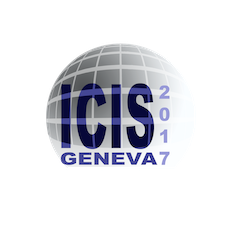Speaker
Description
In order to clarify the physics of the H$^{-}$ ion extraction and beam optics such as the beam halo formation, and contribute to the design of a negative ion source, the integrated model of negative ion beam from plasma meniscus formation to the beam acceleration is developed by using the 3D3V PIC (three dimensions in real space and three dimensions in velocity space particle in cell) model combined with a Monte Carlo calculation. In this study, the beam optics including the beam halo is estimated quantitatively from the viewpoints of the heat loads in the accelerator and the emittance of the negative ion beam.
The JT-60U negative ion source is modeled in the present study. The accelerator is the multi-stage type, which consists of the first acceleration grid (A1G), the second acceleration grid (A2G), and the grounded grid (GRG). Each voltage is taken to be 120 kV, 240 kV, and 355 kV, respectively.
The present 3D3V PIC model is summarized as follows:
1) The electron temperature and the electron density are taken to be 1 eV and 1 x 10$^{18}$ m$^{-3}$, respectively. The ion temperatures in the source plasma are taken to be 0.25 eV for the H$^{+}$ ions and the volume produced H$^{-}$ ions.
2) Electron-neutral and Coulomb collisions are taken into account through the electron diffusion across the magnetic fields. Since the electrons lost along the magnetic field line cannot contribute to the diffusion across the magnetic field, we take into account the electron loss along the field line as ”τ///τ⏊” model, where τ/ and τ⏊ are the characteristic time of the electron loss along the magnetic field line and the characteristic time of the electron diffusion across the magnetic field, respectively.
3) The surface produced negative ions are modelled to be launched from the surface of PG uniformly. The initial velocity distribution is assumed to be the half-Maxwellian with the initial temperature of 1 eV.
4) From the measured emittance of the H$^{-}$ ion beam, one can estimate the H$^{-}$ ion temperature to be 0.1 eV of the order of magnitude. Therefore, the energy relaxation processes of H$^{-}$ ions due to the Coulomb collision and charge exchange with the H atoms are taken into account.
In the present PIC simulations, the stripping loss of H$^{-}$ ions via the collision of H$^{-}$ ion and the residual H$^{2}$ gas molecules is not taken into account. Thus, the heat loads in the experimental result by extrapolating the source gas pressure to 0 Pa, in which there is no contribution from the stripped electrons, is compared with the simulation result. From the experimental results, the fractions of heat loads to the total beam power at 0 Pa are evaluated to be 2.4 % (A1G), 3.0 % (A2G), and 5.0 % (GRG), respectively. On the other, hand, in the simulation result, the fractions of heat loads due to the intercepted negative ions to the total beam power are evaluated to be 0.9 % (A1G), 2.4 % (A2G), and 3.7 % (GRG), respectively. As for the A2G and the GRG, the simulation result almost agrees with the experimental result.
However, there is a difference for the heat load of the A1G between the simulation result and the experimental result. The heat loads in the experimental result include the secondary electrons from the extractor and so on although the effect of the secondary electrons is not taken into account in the present 3D PIC simulation. Thus, the contribution of the secondary electrons will be one of the reasons for the difference of the heat load of the A1G between the 3D PIC simulation and the experimental result.
Moreover, the emittance of the normalized emittance of the negative ion beam after the exit of the GRG is estimated to be 0.18π mm mrad, which agrees with the typical value of the negative ion beam emittance.
